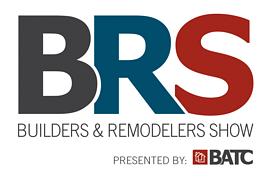
With the Remodeling marketplace booming this spring and predictions of close to a 10% increase in remodeling spending this year over last there will be plenty of work out there for remodeling contractors in 2016. With the surge in mind I have been coaching my contractor clients to be smart about how they do business. I have been stressing that they should take advantage of this surge by being selective about the customers they choose to work with and by raising their margins now before they get too booked up and regret becoming unavailable. If this makes sense to you and for your business read on to find out how to do fewer sales calls but at the same time close higher margin deals.
Agree on an agenda before committing to a sales call
Before you even commit to a sales call get your prospect’s commitment to discuss and commit to an agenda for the first sales call. Doing so can help you control the sales call as well as how your valuable and limited time will be invested.
The agenda should include the things they want to accomplish as well as the things you want to accomplish at that first meeting. If you can’t or won’t agree to what they want to accomplish, or they won’t agree to what you want to accomplish, then simply let them know you won’t be able to help them.
These three things should be part of your agenda
After you hear and approve of the items they want on the agenda ask permission to share the items you want on the agenda. You can include anything you want on your agenda but make sure at a minimum you get a commitment to discuss these three things before asking them if it still makes sense to invite you over:
Can we talk about why you want to do your project?
 You will need to know this info to create a unique solution and to have confidence in what you suggest to them when discussing options. You will also need to know this information to avoid becoming a commodity contractor by just giving them a price on what they thought they needed. You know, just like pretty much every commodity contractor does every day.
You will need to know this info to create a unique solution and to have confidence in what you suggest to them when discussing options. You will also need to know this information to avoid becoming a commodity contractor by just giving them a price on what they thought they needed. You know, just like pretty much every commodity contractor does every day.
Can we talk about your budget for this project?
Let them know you will either need to get a realist budget from them in order to help them, or that you can let them know what they should assume for a budget. But, be clear that a requirement of getting together will be to discuss and decide if there is a fit between their budget and the scope of work they would like completed.
Can we talk about how you plan to make your decisions?
 You need to get their commitment to discuss how they will decide about important project details as well as which contractor they will ultimately partner with. If you don’t know how they plan to make these decisions how can you possibly help them make decisions and why should you be surprised when they don’t or can’t decide?
You need to get their commitment to discuss how they will decide about important project details as well as which contractor they will ultimately partner with. If you don’t know how they plan to make these decisions how can you possibly help them make decisions and why should you be surprised when they don’t or can’t decide?
If they don’t know how they plan to make decisions think of it as your job to help them figure that out. That alone can help differentiate you from the commodity contractors.
Setting the agenda shows you’re serious and filters out the commodity buyers
Many of my consulting clients are now using what I call “the agenda step” as a way to prequalify who they are willing to visit. By creating this agenda they essentially give their prospects some homework to do to get ready for the visit. After my clients get good at setting the agenda they experience much better close ratios and they all report selling to much better customers. They also report most of these better customers are also willing to pay higher prices.
After setting the appointment several of my clients even send a follow-up appointment confirmation email documenting the agreed agenda.
One more thing to keep in mind
Good customers who are willing to have honest discussions and are willing to pay more for “different” hang around with other people just like them. After successfully putting the agenda step in place at your business, like my clients, you will probably get referrals to more good customers who will pay more for different.


 One of the very important things that hands-on contractors who seek to become construction business owners need to get ready for is bringing on sales staff to help the owner sell an adequate volume of work as the business grows. Below is a 10 item checklist contractors can use to help them get ready for this critical step in the growth of their businesses. From my own experience of hiring my first remodeling salesperson many years ago number 10 is the most important.
One of the very important things that hands-on contractors who seek to become construction business owners need to get ready for is bringing on sales staff to help the owner sell an adequate volume of work as the business grows. Below is a 10 item checklist contractors can use to help them get ready for this critical step in the growth of their businesses. From my own experience of hiring my first remodeling salesperson many years ago number 10 is the most important. Establish Sales Goals and a Performance Based Compensation Strategy you can share with candidates as you interview them and your business will use once they are hired.
Establish Sales Goals and a Performance Based Compensation Strategy you can share with candidates as you interview them and your business will use once they are hired. On April 2nd, 2015 I presented a half day marketing workshop titled "Choosing and Targeting the Right Customers and Projects Types for Your Business". The workshop was billed as the keynote session for the
On April 2nd, 2015 I presented a half day marketing workshop titled "Choosing and Targeting the Right Customers and Projects Types for Your Business". The workshop was billed as the keynote session for the  Take advantage of the timing
Take advantage of the timing  Stop taking just any customers and jobs. Be selective about who you will let become your customers. For example why not only work with people who would say they are "working with" you, not those who would say you are "working for them". Also, be selective about the project types you go after. For example why not attract people who want high quality products. If you sell using one markup across all cost categories the gross profit dollars earned on material intensive projects due to higher price point products is an easier way to meet overhead and net profit goals, both now and in the future, particularly when compared to selling and producing labor intensive projects.
Stop taking just any customers and jobs. Be selective about who you will let become your customers. For example why not only work with people who would say they are "working with" you, not those who would say you are "working for them". Also, be selective about the project types you go after. For example why not attract people who want high quality products. If you sell using one markup across all cost categories the gross profit dollars earned on material intensive projects due to higher price point products is an easier way to meet overhead and net profit goals, both now and in the future, particularly when compared to selling and producing labor intensive projects. The old traditional marketing methods of trying to find prospects who want your services now and interrupting them to get their attention no longer work. Today consumers are the ones deciding how they will find and qualify their project ideas as well as the contractor they will work with. Instead use inbound marketing tactics that help consumers find your business. This should be one of the two primary purposes of your marketing and can be accomplished on your web site using SEO tactics and good content on your site’s pages as well as your blog. The other primary purpose of your marketing, particularly at your web site, should be to help prospects decide if what you offer and how you do business are right for them. In other words your marketing should help them prequalify themselves so they either want to contact you or know they shouldn't.
The old traditional marketing methods of trying to find prospects who want your services now and interrupting them to get their attention no longer work. Today consumers are the ones deciding how they will find and qualify their project ideas as well as the contractor they will work with. Instead use inbound marketing tactics that help consumers find your business. This should be one of the two primary purposes of your marketing and can be accomplished on your web site using SEO tactics and good content on your site’s pages as well as your blog. The other primary purpose of your marketing, particularly at your web site, should be to help prospects decide if what you offer and how you do business are right for them. In other words your marketing should help them prequalify themselves so they either want to contact you or know they shouldn't.
 I often hear contractors say they offer fair pricing. When I ask them what they mean by that most really can't provide a logical answer, or their answer is subjective. It got me to thinking about what fair pricing really is. I came up with three considerations I think make a contractor's pricing fair to their customers, but also to their business as well as their employees. Let me know what you think.
I often hear contractors say they offer fair pricing. When I ask them what they mean by that most really can't provide a logical answer, or their answer is subjective. It got me to thinking about what fair pricing really is. I came up with three considerations I think make a contractor's pricing fair to their customers, but also to their business as well as their employees. Let me know what you think. I would suspect most contractors work for customers who have good jobs offering decent pay for the job performed, workers compensation coverage, benefits like vacation and holiday pay so they can enjoy life, health insurance so they can stay healthy and retirement contributions so they can save for a comfortable retirement. I bet if their employers took any of those things away from them “it wouldn’t be fair”.
I would suspect most contractors work for customers who have good jobs offering decent pay for the job performed, workers compensation coverage, benefits like vacation and holiday pay so they can enjoy life, health insurance so they can stay healthy and retirement contributions so they can save for a comfortable retirement. I bet if their employers took any of those things away from them “it wouldn’t be fair”.
 Don’t you just hate it when a prospect you expected to do business with gives your detailed plans and or specifications to another contractor? That’s bad enough, but isn’t even worse when they give the job to the other contractor and that guy would never have been able to offer the work or price the job without your specs?
Don’t you just hate it when a prospect you expected to do business with gives your detailed plans and or specifications to another contractor? That’s bad enough, but isn’t even worse when they give the job to the other contractor and that guy would never have been able to offer the work or price the job without your specs?  “Will you need help discussing and specifying the details and products to be used in your project in order to make good decisions about your project and how much money to invest in it?”
“Will you need help discussing and specifying the details and products to be used in your project in order to make good decisions about your project and how much money to invest in it?”  Here is some sample language you can consider using inside the remodeling proposals you create for prospects. This information is for your reference only. Be sure you have it reviewed by your own legal council before using it.
Here is some sample language you can consider using inside the remodeling proposals you create for prospects. This information is for your reference only. Be sure you have it reviewed by your own legal council before using it.  Bathroom renovations make homes more modern, but the return on this investment is lower compared to other home remodeling projects. The average amount recouped from a mid-range bathroom project (those costing around $16,000) upon selling is 70 percent of total costs,
Bathroom renovations make homes more modern, but the return on this investment is lower compared to other home remodeling projects. The average amount recouped from a mid-range bathroom project (those costing around $16,000) upon selling is 70 percent of total costs,  Most homeowners already have a budget in mind for their bathroom renovation. This is where a contractor's expertise can win the trust of prospective clients.
Most homeowners already have a budget in mind for their bathroom renovation. This is where a contractor's expertise can win the trust of prospective clients. A common theme for master bathrooms these days is removing the tub altogether in favor of a spa. Of course, there are caveats when it comes to installing an indoor hot tub—for starters, they are large and difficult to get indoors, and many must be installed on a ground floor due to their weight. In addition, there could be problems with humidity levels when the spa cover is removed and floor damage if the unit leaks,
A common theme for master bathrooms these days is removing the tub altogether in favor of a spa. Of course, there are caveats when it comes to installing an indoor hot tub—for starters, they are large and difficult to get indoors, and many must be installed on a ground floor due to their weight. In addition, there could be problems with humidity levels when the spa cover is removed and floor damage if the unit leaks,  Guest Blogger: Brian Wilkins is an Arizona State University journalism grad who has worked as a radio broadcaster and banking industry professional. He is an independent journalist, blogger and small business owner who loves life. He lives off-the-grid and has not owned a TV in more than six years.
Guest Blogger: Brian Wilkins is an Arizona State University journalism grad who has worked as a radio broadcaster and banking industry professional. He is an independent journalist, blogger and small business owner who loves life. He lives off-the-grid and has not owned a TV in more than six years. Well before attempting to break past $Million in installed sales remodelers and home improvement contractors should already have an established and tested sales system in place. The system should be well defined. Those involved with selling, as well as supporting the sales department at your business, must be trained and held accountable to using it correctly and consistently.
Well before attempting to break past $Million in installed sales remodelers and home improvement contractors should already have an established and tested sales system in place. The system should be well defined. Those involved with selling, as well as supporting the sales department at your business, must be trained and held accountable to using it correctly and consistently.  Decide what Sales System you will use
Decide what Sales System you will use I want to stress that consistency of and with your company's sales approach will be really important as the business grows. Without consistency it will be difficult for the owner to become a sales manager, or transfer sales management to someone else, because each sales person may approach selling in a different way. And, without consistency of sales approach, repeat customers and their referrals may not experience what they expected when a new salesperson visits them. Plus, by having a consistent sales approach that successfully helps prospects buy the right solution, you can market the advantages of that sales system with confidence prospects will experience what they expect if they respond you your marketing.
I want to stress that consistency of and with your company's sales approach will be really important as the business grows. Without consistency it will be difficult for the owner to become a sales manager, or transfer sales management to someone else, because each sales person may approach selling in a different way. And, without consistency of sales approach, repeat customers and their referrals may not experience what they expected when a new salesperson visits them. Plus, by having a consistent sales approach that successfully helps prospects buy the right solution, you can market the advantages of that sales system with confidence prospects will experience what they expect if they respond you your marketing.

 Trust is the key consideration here, and can become the client’s most valued benefit. Provided that a realist budget is established and agreed upon prior to entering into a Design/Build agreement, the Design/Builder takes on the responsibility of protecting the budget as design happens. Do not sell this as an advantage unless you are confident that you and the client agree on the scope of work. Savings and or budget control are then achieved through better planning. The Owner can exercise his desired degree of control over design, with the added advantage of knowing the cost implications of each decision as it happens. In the client’s eyes, the trust will be broken if he or she sees the Design/Builder as the cause for going over budget. It’s their money, not yours. To avoid this perceived breach of trust, before you offer or entertain alternate design ideas that will increase costs, ask your client for permission to spend more than the agreed budget.
Trust is the key consideration here, and can become the client’s most valued benefit. Provided that a realist budget is established and agreed upon prior to entering into a Design/Build agreement, the Design/Builder takes on the responsibility of protecting the budget as design happens. Do not sell this as an advantage unless you are confident that you and the client agree on the scope of work. Savings and or budget control are then achieved through better planning. The Owner can exercise his desired degree of control over design, with the added advantage of knowing the cost implications of each decision as it happens. In the client’s eyes, the trust will be broken if he or she sees the Design/Builder as the cause for going over budget. It’s their money, not yours. To avoid this perceived breach of trust, before you offer or entertain alternate design ideas that will increase costs, ask your client for permission to spend more than the agreed budget.


 Once a potential customer knows they have a need they’ll begin researching options for what they can or should do to fill that need. During this stage of their buying cycle you’ll want to provide them with white papers, checklists, and or e-books. The strategy should be to provide more in-depth content that describes the problem(s) they have and outlines step by step solutions—which your company just happens to be able to help them with. This is also the lead generation stage. By keeping track of who downloads information from your site you can separate the consumers who are genuinely interested in what you offer and how you can help them from others who are just casually browsing your site.
Once a potential customer knows they have a need they’ll begin researching options for what they can or should do to fill that need. During this stage of their buying cycle you’ll want to provide them with white papers, checklists, and or e-books. The strategy should be to provide more in-depth content that describes the problem(s) they have and outlines step by step solutions—which your company just happens to be able to help them with. This is also the lead generation stage. By keeping track of who downloads information from your site you can separate the consumers who are genuinely interested in what you offer and how you can help them from others who are just casually browsing your site. 

 One might be that they realize your business is not right for them.
One might be that they realize your business is not right for them.
 Never assume what they should do or tell them what to do.
Never assume what they should do or tell them what to do.





